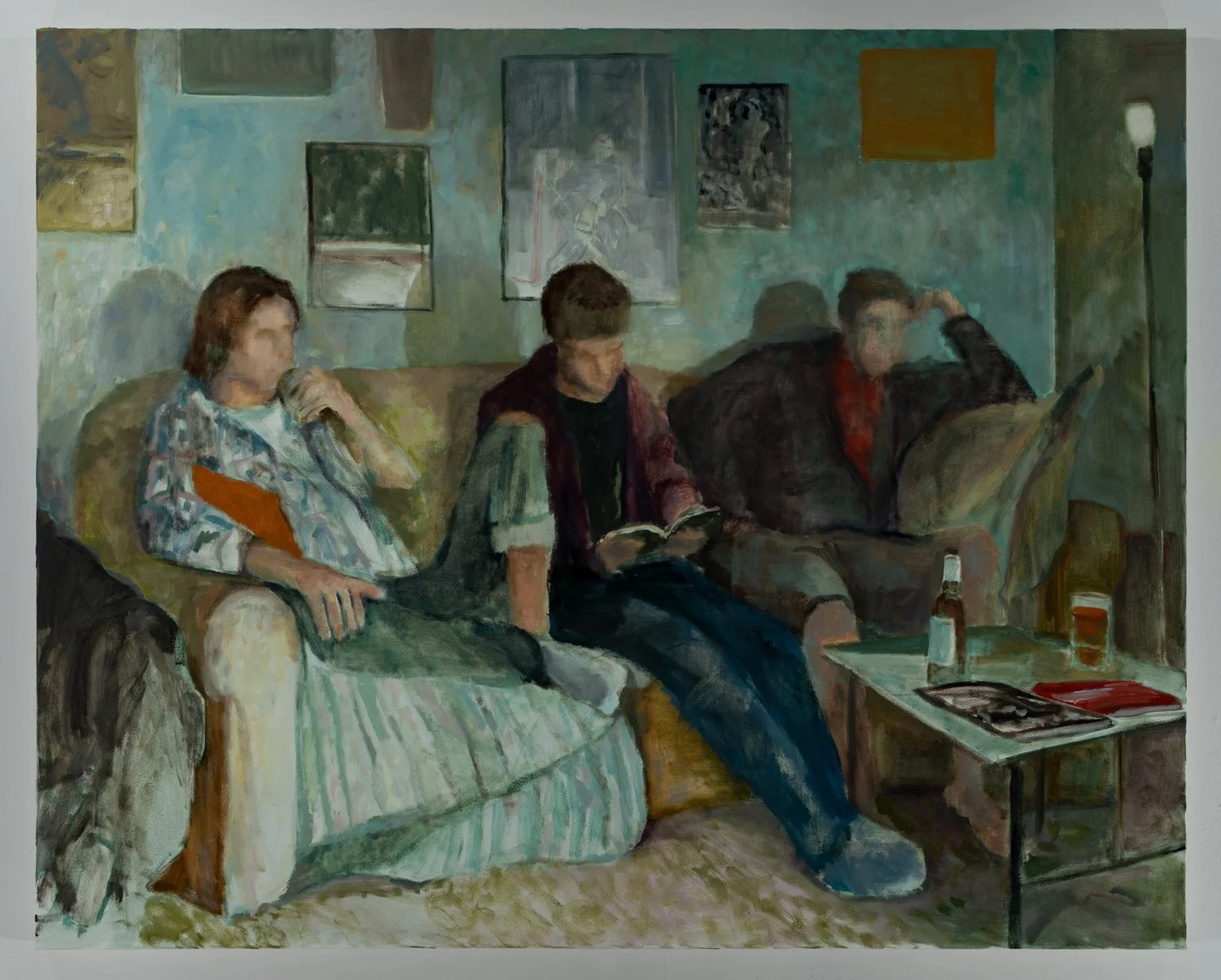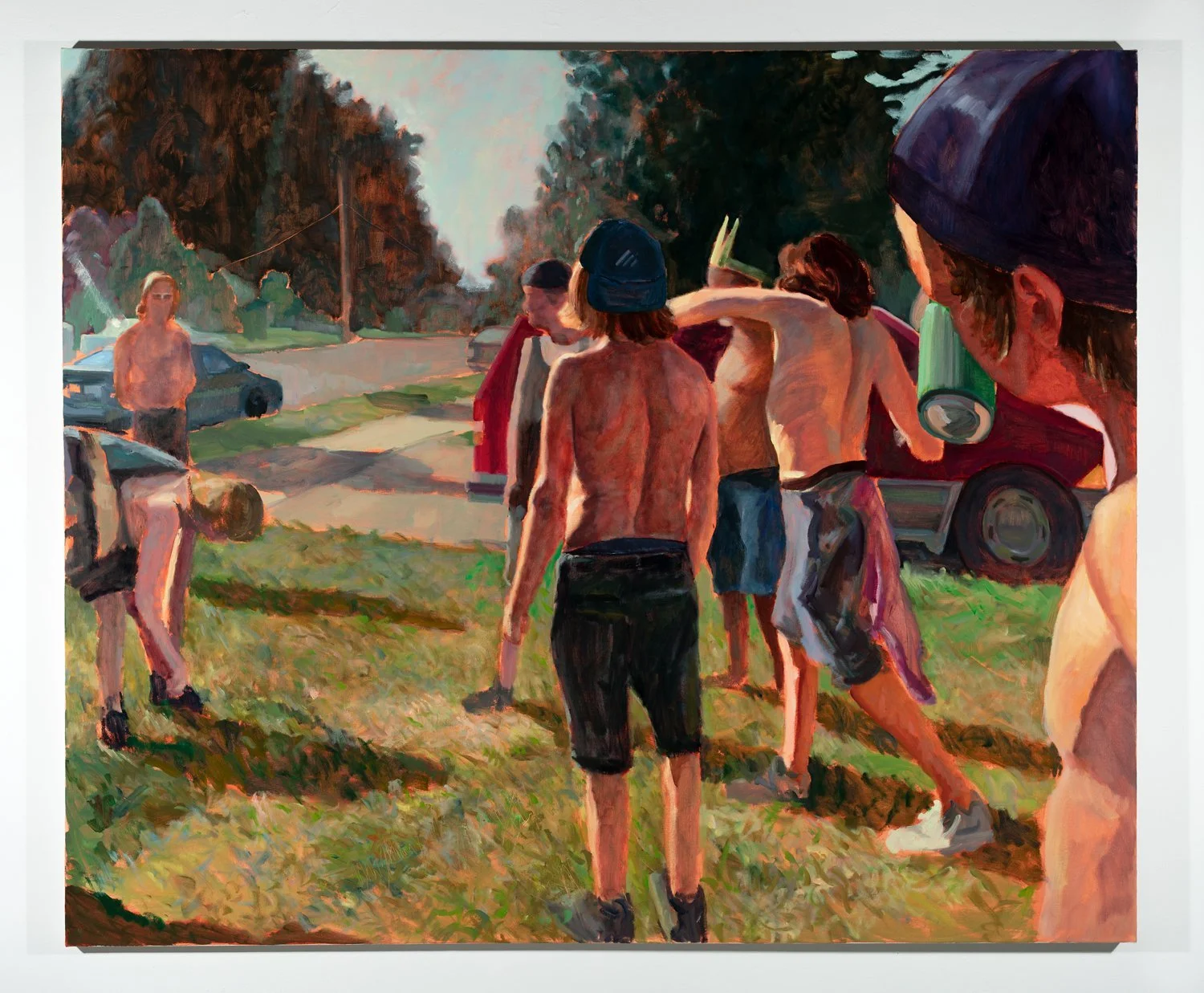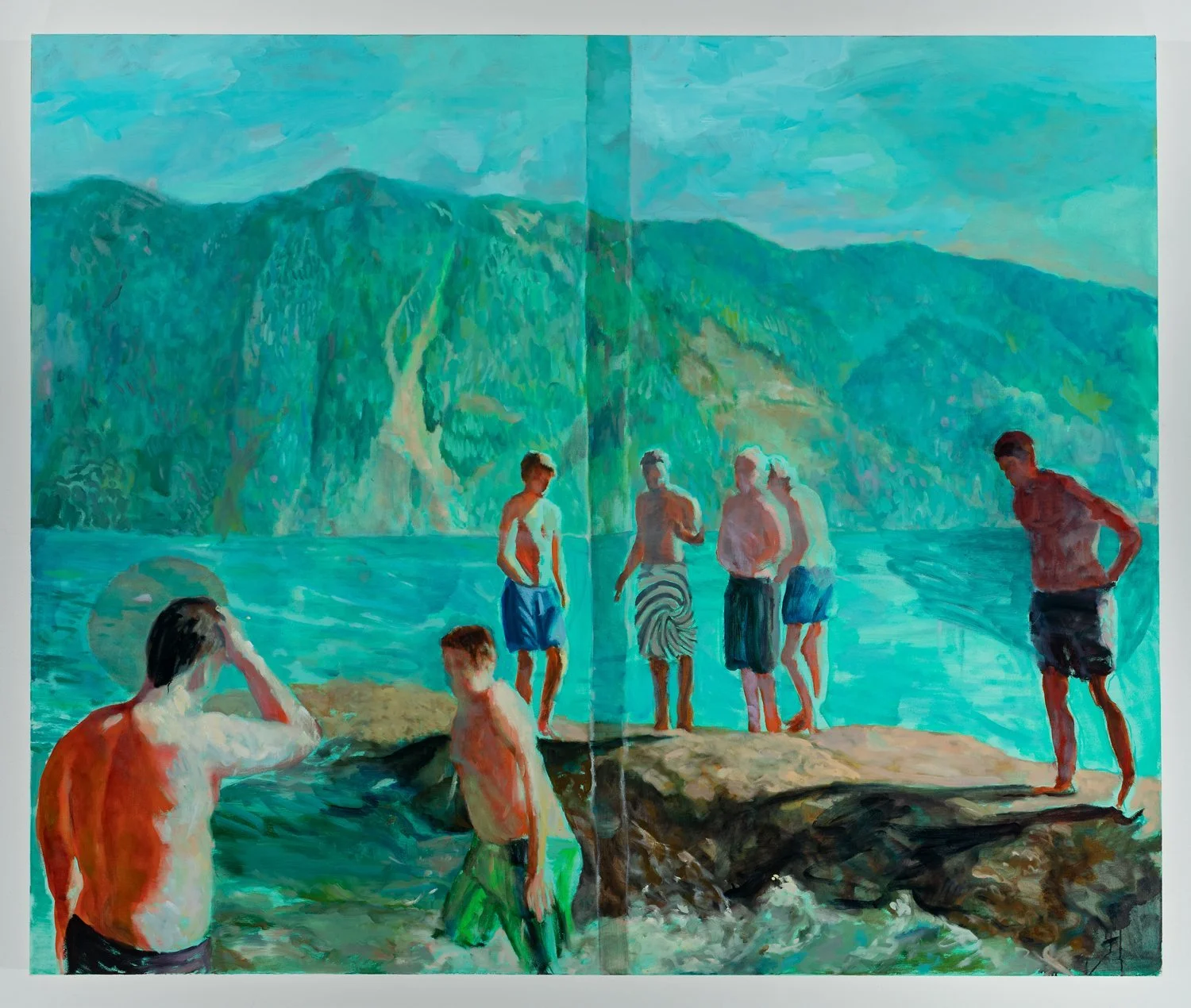ARTIST INTERVIEW: David B. Stewart
David Stewart
Please introduce yourself. What inspired you to become an artist?
My name is David Stewart. I am a painter living and working in Montreal, Canada. I grew up on the west coast of Canada in a small town called Port Coquitlam, which is about 45 minutes from Vancouver.
Growing up I was always a bit of a misfit, but I was praised for being artistic. In high school I found a Salvador Dali book at a bookstore and was completely stunned by the intricacy of images that were possible with oil paint. I think it just snowballed from there. I’m still that kid just trying to figure out how to paint.
What drew you to produce figurative paintings? What do you find fascinating about the human figure?
I think there is always an inherent narrativity when using figures, so that has been a big part of my interest in them. I grew up and went to art school in Vancouver, so figurative painting really wasn’t a major part of the art scene (which made me even hungrier to explore it).
Why do you choose to blur out the faces of your subjects?
It’s a common question that I wish I had a smart answer for. In reality, the process of painting has dictated the outcome for me. I slowly started to find a type of vagueness that had some magnetism in it, and I kept exploring it in my figures. I tend to scrape things down when I don't like them in a painting, so this habit caused a slight erasure of the figure's face.
What are the characteristics of an interesting scene to capture?
I’m not sure who exactly said it, but I’ve heard artists describe great paintings as capturing the moment right before or after something has happened. It gives the viewer some space to fill in the gaps with their own lived experience. I also enjoy subjects that have a type of timelessness to them, or give the sense that the subject could exist in the future or the past.
How would you describe your painting style? Is there anything in particular that you believe makes your work unique?
It’s always difficult to succinctly describe style without pigeonholing yourself, so I’d say it's a mixture of influences. European painting plays a large influence in my style, with post impressionist artists like Pierre Bonnard and Edward Vuillard coming to mind. Contemporary American painter Eric Fischl has a type of edge to his depictions of suburbia that has always captivated me, and I suppose my style has a tension between the subject and the way the subject is painted. A musical analogy would be the 90’s song ‘Semi-Charmed Life’; it’s got an upbeat and happy melody but the lyrics are about crystal meth addiction.
What is the importance of the medium you use, in relation to your narrative?
The medium is really everything for me. I was pushed to try and use different mediums for artwork but there is something so specific about oil paint that I gravitate towards. It has a very challenging materiality, but that is what keeps me coming back for more. I don’t think there is enough time on earth to learn other mediums when I’m just barely scratching the surface of this one.
Thinking about your most recent work, what was your creative process? Describe the journey of the piece from start to finish.
I was on a bachelor party trip in Las Vegas, and one of my friends was floating in the hotel pool with his hands stretched out in a Christ-like pose. The gaudy hotel behind him really interested me, so I pulled out my iphone and snapped a few pictures. I made the painting right away when I got home by projecting the body onto the canvas. In the background I tried simplifying the hotel into a type of grid, and kept thinking about Joseph Albers as I painted it. I’m not sure if it’s done yet, but it was painted very quickly over 2 weekends.
Chris floating at the Linq 2023
Oil on Canvas, 48x60
Which painting has been your favourite to work on, and why?
That’s a tough one, but I’d probably say ‘Westminster After Three’ and ‘Westminster After Three Fifteen’ were both favourites of mine. The images were of a very close group of friends, and I felt like I was reliving a piece of my youth. There was a type of muggy afternoon heat that I was trying to get right in those paintings, and although the painting always falls a bit short, it felt close to what I wanted.
Westminster After Three, 2022
Oil on canvas, 60x72
How are you present in your artwork?
My work is always autobiographical in some way, so my presence is there even when I’m not in the painting. The process of painting is really one of the only times where I feel like I’m in the moment and not thinking or worrying about other stuff in life. The trace-like state is very soothing.
Which artists do you admire? Do any of them have an influence on your own work?
When I was an undergrad student at Emily Carr University, my school invited the painter Peter Doig to accept an honorary doctorate. I liked his paintings, but it was really his soft spoken kindness and humble nature that surprised me. It taught me that successful people are still people, and that there was no room for an ego in the arts. His approach to painting is also something I’ve been influenced by heavily, and he’s always trying new ways of making a painting, which is really exciting and inspirational.
Why do you think art is important in society?
I think that as society becomes more and more polarized into like-minded groups, art has the power to ask questions without easy answers or partisan objectives. I do worry that art is fighting a losing battle on this trend of polarization, but it really takes a great work of art to disrupt that trend. It could be a painting, a song or a stand-up routine. Maybe it’s a meme! In any case, a society without art is vapid and decadent. Art has the ability to expose uncomfortable truths that society ignores or spins into polarized political nonsense.










